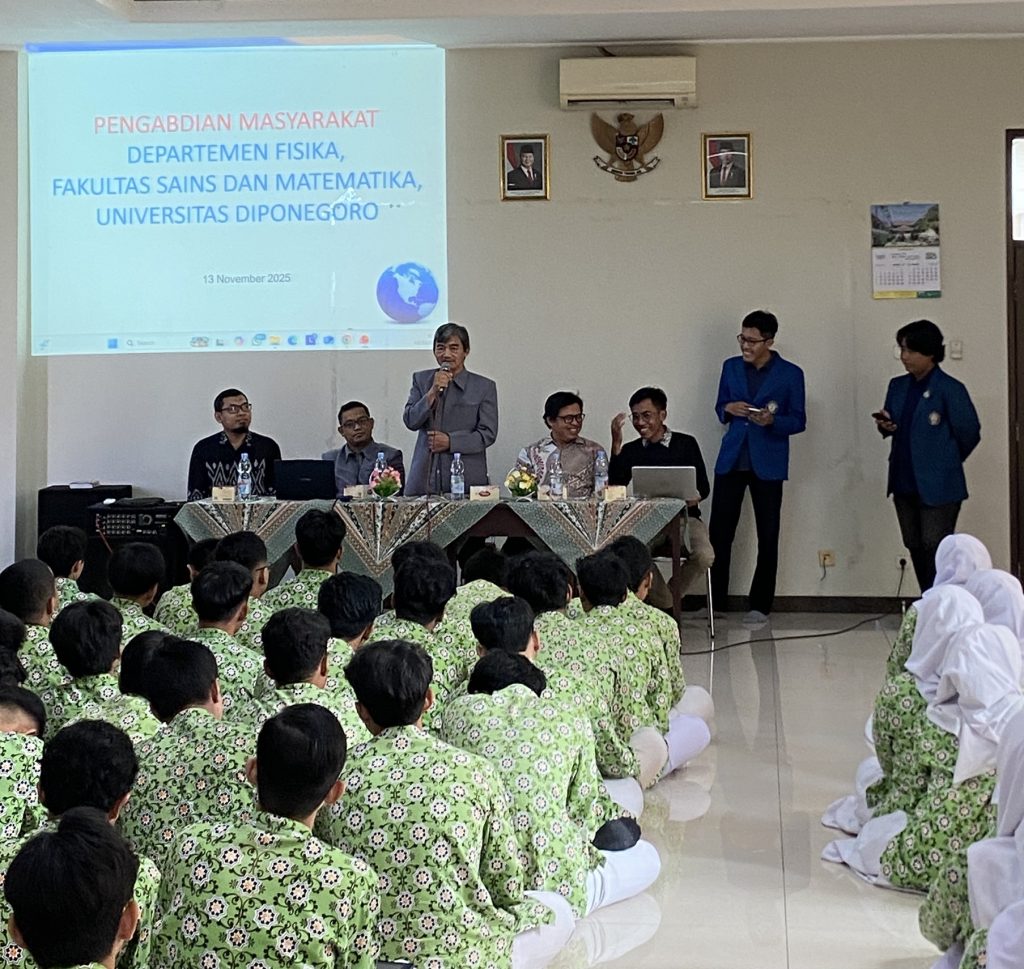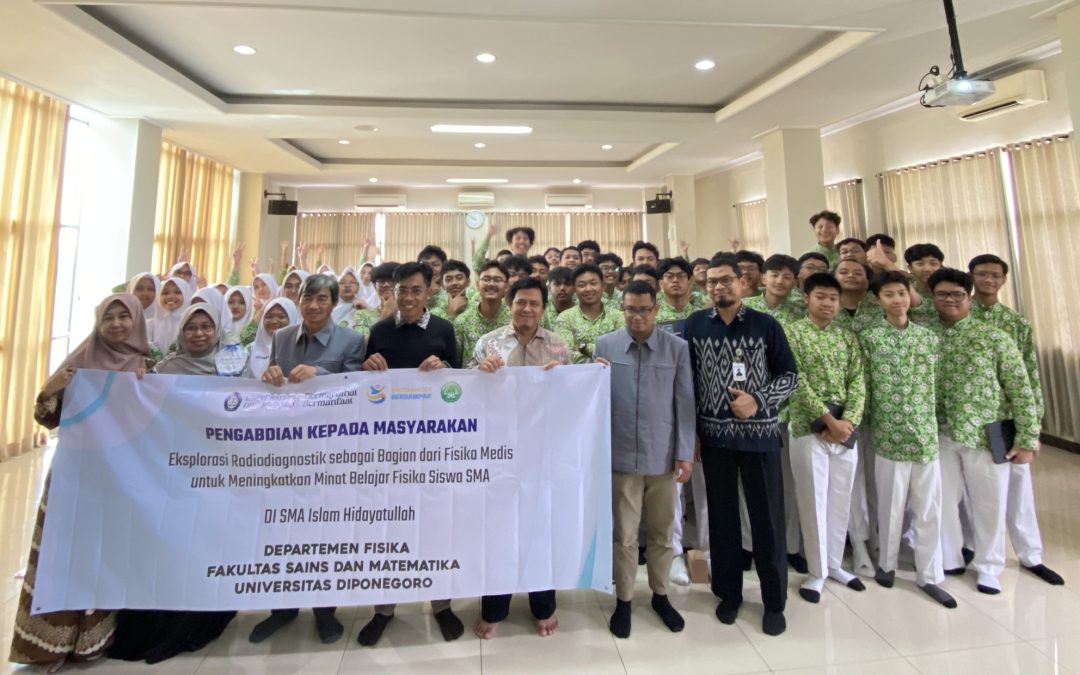Semarang, 23 October 2025 – The Department of Physics, Faculty of Science and Mathematics, Universitas Diponegoro conducted a community service program entitled “Exploring Radiodiagnostics as a Part of Medical Physics to Increase High School Students’ Interest in Learning Physics” at SMA Islam Hidayatullah Semarang. The activity targeted science-track students and aimed to introduce real-world applications of physics in radiodiagnostic technologies such as X-ray, CT scan, and MRI, while at the same time broadening students’ awareness of career opportunities in medical physics. The program was led by Oki Ade Putra, M.Si. with team members Zaenul Muhlisin, S.Si., M.Si., F.Med., Much. Azam, S.Si., M.Si., and Dr. Choirul Anam, S.Si., M.Si., F.Med., supported by undergraduate students from the Radiation and Medical Physics stream who assisted in preparing materials and managing on-site activities.
The event began with opening remarks from representatives of the school and the physics department, outlining the objectives of the program and emphasizing the importance of medical physics in modern healthcare services. Before the core session, students completed a pre-test designed to map their initial understanding of ionizing and non-ionizing radiation, radiodiagnostic instruments, and their perception of physics and the medical physicist profession. The results indicated that most students only recognized “X-ray” as a tool to “see bones” and were not yet able to distinguish between X-ray, CT scan, and MRI, nor were they familiar with the term “medical physicist,” even though many expressed an interest in medical-related careers.

The main session consisted of an interactive seminar that linked fundamental concepts of waves and electromagnetic radiation—already introduced in the classroom—to the working principles of radiodiagnostic modalities. The material was delivered in a communicative manner, interspersed with guiding questions and simple clinical examples to encourage students to participate, reflect, and ask questions. The seminar was further strengthened by an educational video featuring animations of X-ray image formation, CT scan slice reconstruction, and the basic principle of MRI. These visuals and animations helped students visualize how physics concepts operate inside a radiology room, transforming abstract ideas into concrete and more accessible understanding.
In addition to the conceptual explanations, the team introduced the medical physicist profession in greater depth, describing roles in diagnostic radiology, radiotherapy, and nuclear medicine, along with responsibilities related to radiation safety for both patients and healthcare workers. The academic pathway—from an undergraduate degree in physics to advanced training in medical physics—was outlined clearly so that students could gain a realistic picture of study options and career prospects. The program continued with a group discussion and quiz session; students worked in small groups to solve scenarios on choosing the most appropriate imaging modality for a given case, then took part in a reward-based quiz that served both as a fun activity and a formative assessment.

At the end of the event, students completed a post-test with a format parallel to the pre-test. Overall, there was a noticeable improvement in their ability to differentiate the functions of X-ray, CT scan, and MRI, as well as in their understanding that medical use of radiation must always adhere to principles of protection and dose optimization. Several students expressed that they now perceive physics as a “living” science closely connected to health technologies, rather than merely a collection of equations on the board. The school welcomed the program positively, noting that it provided concrete examples and ready-to-use materials that can enrich classroom teaching, particularly in topics such as waves, optics, and radiation. The activity concluded with the presentation of a plaque and a concise medical physics module to the school, followed by a group photo session as a symbol of the ongoing collaboration between the Department of Physics, FSM UNDIP, and SMA Islam Hidayatullah Semarang.
Through this program, the Department of Physics hopes that more high school students will recognize the strategic role of physics in healthcare and view medical physics as a promising career path with a direct and meaningful impact on society.

